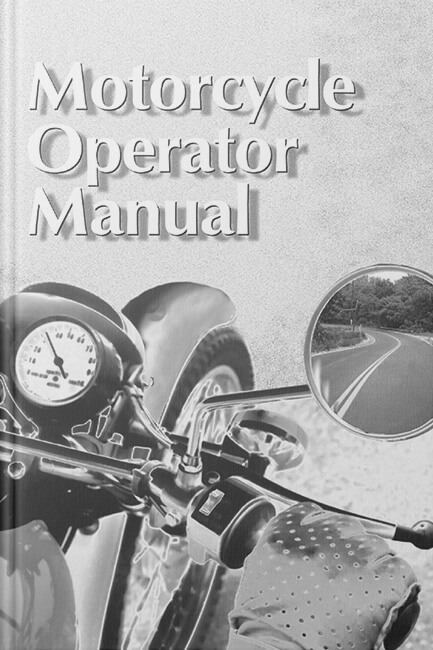West Virginia Motorcycle Manual Driver's Manual
To make studying easier, the West Virginia DMV handbook 2025 edition is available in multiple languages and comes with an audio version. Get interactive support with our AI assistant to clarify any complex terms.
West Virginia Motorcycle Manual Online 2025
West Virginia motorcyclists know that riding can be a fun, exhilarating and cost-effective way to get from point A to point B.
However, they also know that along with the enjoyment of riding a motorcycle come potential hazards and risks. That’s why the West Virginia Division of Motor Vehicles (DMV) makes it such a challenge to get your motorcycle license.
Not to worry, though; it’s not entirely impossible. This article will show you how to get your license and get on the road in no time!
Motorcycle Operator Manual
This is the one resource you’re going to want to have on hand as you prepare for the DMV motorcycle exams. It’s a comprehensive document outlining all the skills and knowledge you’ll need to be a safe, responsible rider. The West Virginia Motorcycle Operator Manual is divided into the following four sections:
- Preparing to Ride – This section will help you know what kind of gear to choose (e.g. helmet, eye/face protection and protective clothing). It discusses how to get familiar with your motorcycle (e.g. controls, maintenance, pre-ride checks). The section also talks about the responsibilities of a motorcyclist.
- Riding Within your Abilities – This section makes up the bulk of the Motorcycle Operator Manual. It teaches the basic techniques for proper vehicle control (e.g. body positioning, shifting gears, braking, and turning). It also talks about keeping your distance from other vehicles in a variety of traffic situations. Importantly, the section discusses strategies for crash avoidance (e.g. quick stops, swerving, turning quickly, cornering) and handling dangerous situations (e.g. uneven surfaces, obstacles in the road, animals, flying objects, hazards, etc.). Procedures for carrying passengers and cargo and riding with groups are also explored in this section.
- Being in Shape to Ride – This section discusses the effects of drugs and alcohol on the body. It talks about the legal BAC (blood alcohol content) limits in the state.
- Earning your License – This section explains the procedures for motorcycle licensing. It prepares learners for the written knowledge test on rules and regulations and introduces the skills needed to pass the on-cycle practical exam.
MSF RiderCourse
The Motorcycle Safety Foundation (MSF) recognizes that although motorcycling can be an extremely popular activity, the unfortunate reality is that many motorcyclists never learn how to ride safely. Unlike other courses, the MSF RiderCourse focuses on teaching critical skills you’ll actually use in real-world traffic situations. You’ll come out of the course with skills such as:
- Obstacle avoidance
- Traffic strategies
- Motorcycle maintenance
- Selecting the correct protective apparel
- Braking maneuvers
- Effective turning
